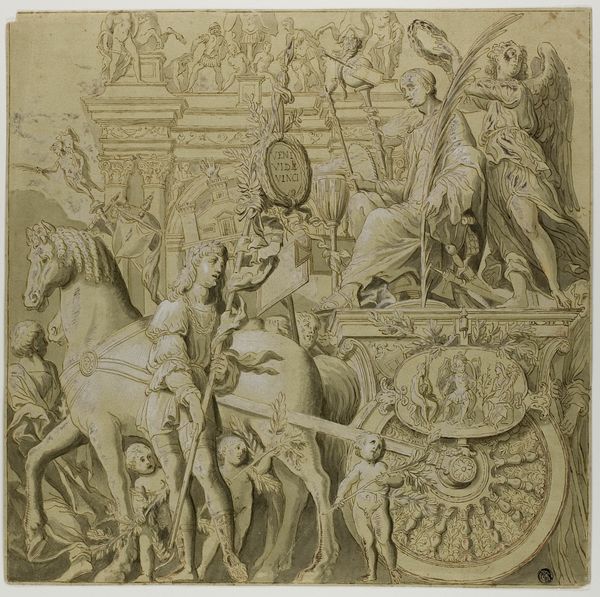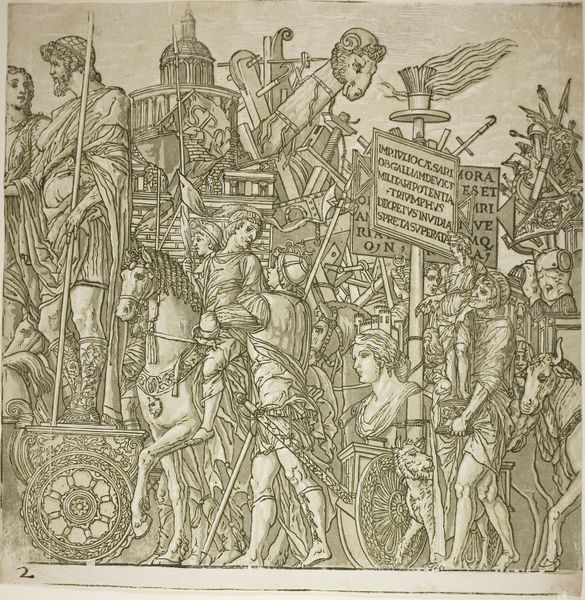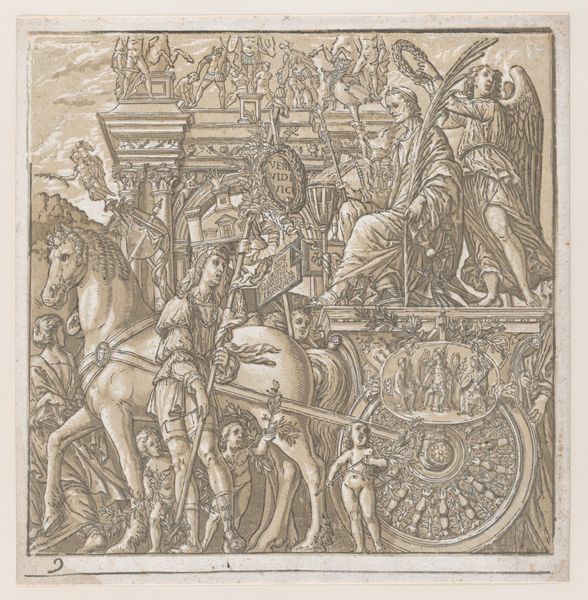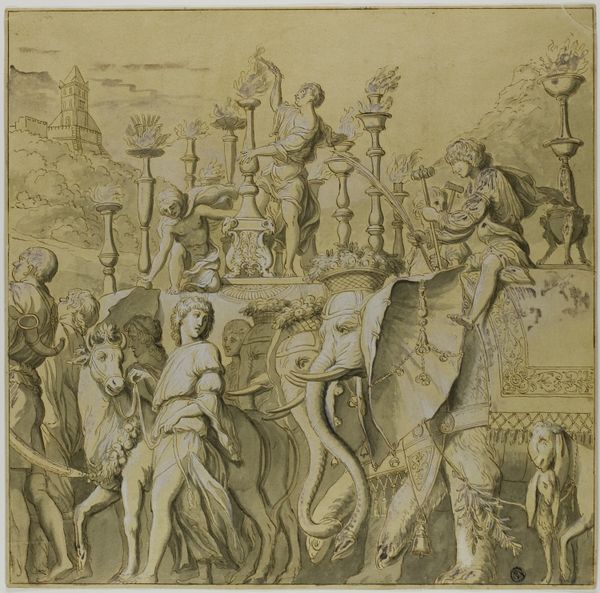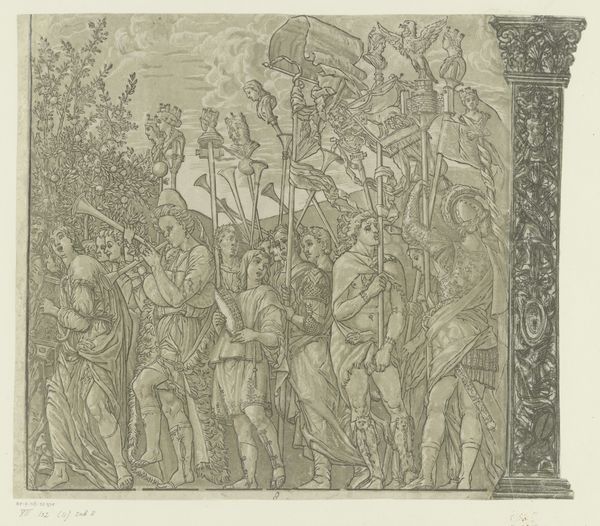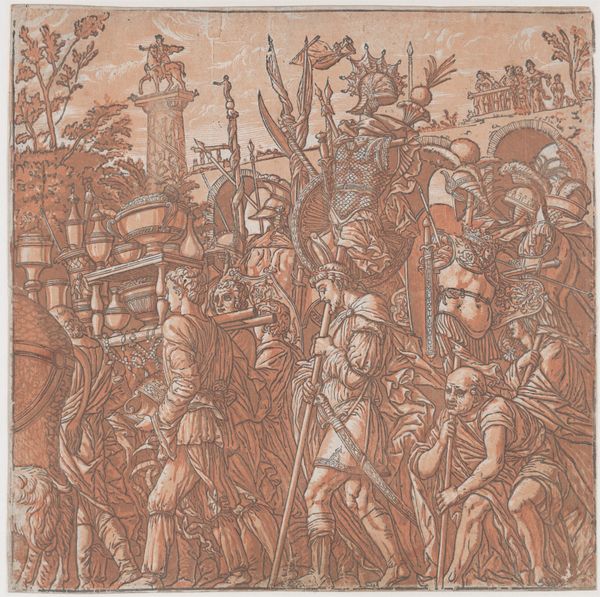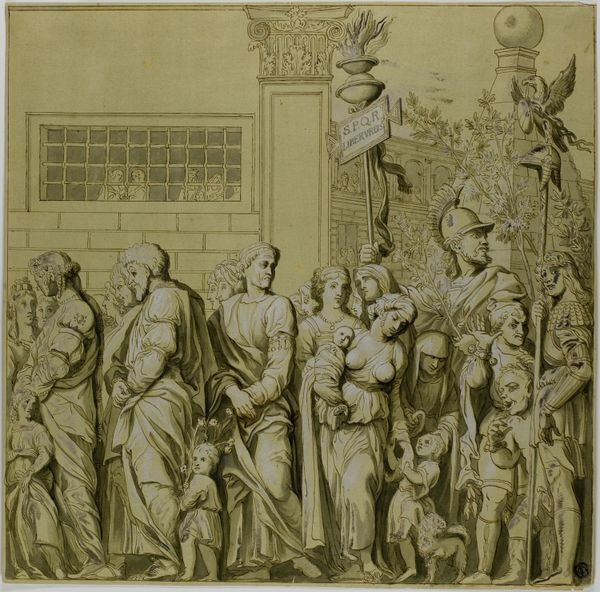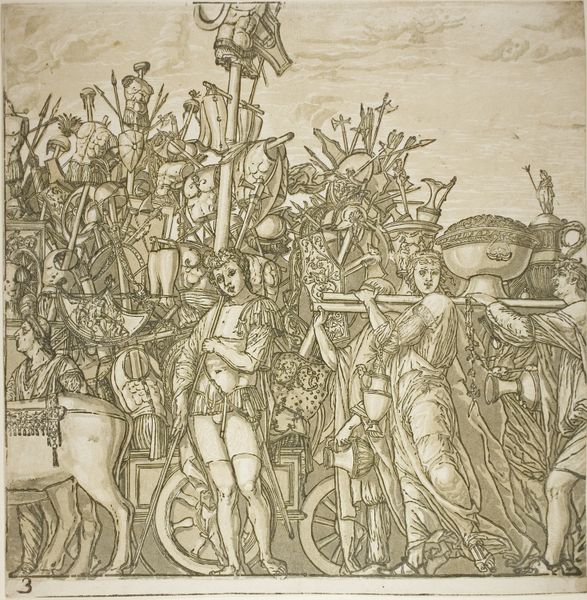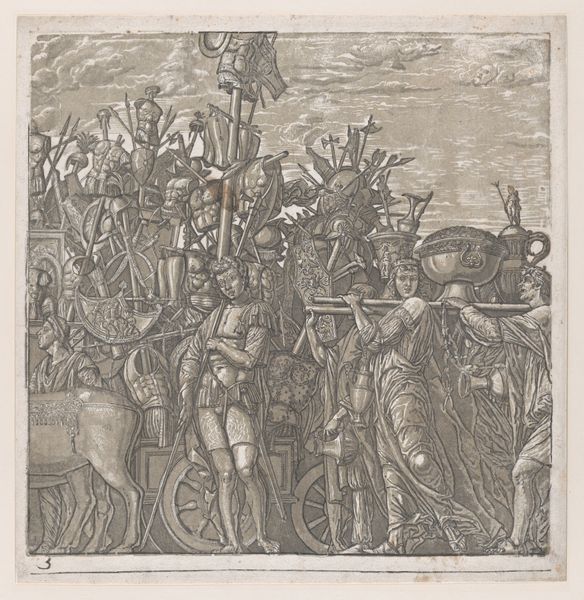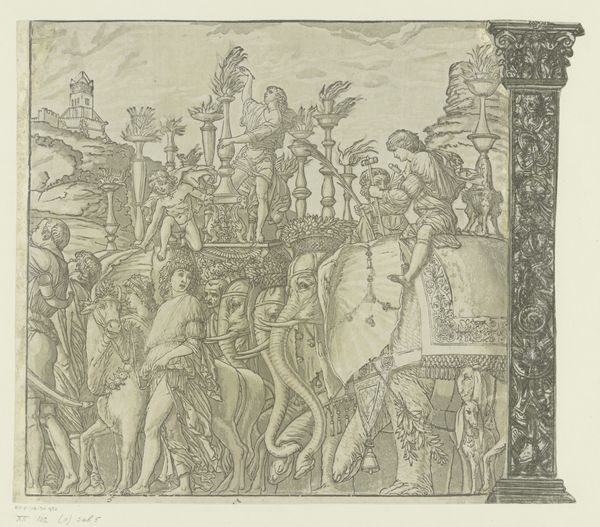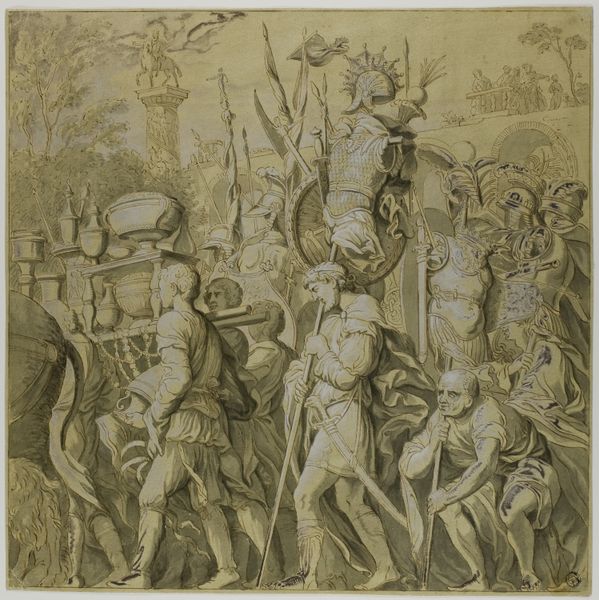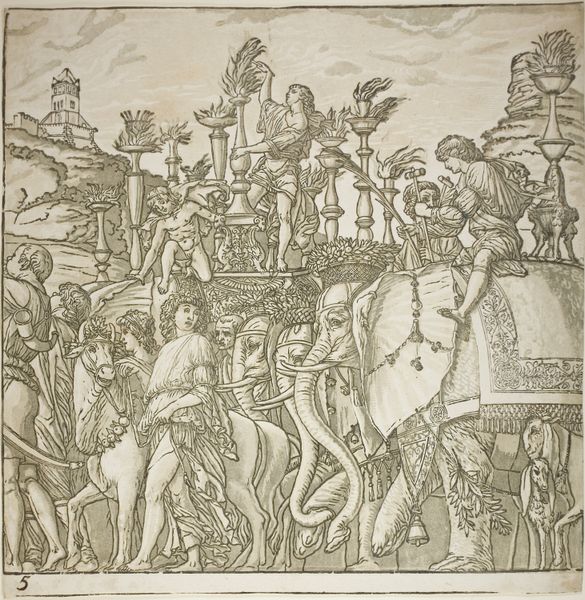
Triumphs of Julius Caesar: Canvas No. II c. 18th century
0:00
0:00
drawing, print, paper, ink, pen
#
portrait
#
drawing
#
ink painting
# print
#
figuration
#
paper
#
romanesque
#
ink
#
ancient-mediterranean
#
men
#
pen
#
history-painting
Dimensions: 372 × 380 mm
Copyright: Public Domain
Curator: Welcome! Today, we are exploring "Triumphs of Julius Caesar: Canvas No. II," a print made around the 18th century. The work is currently held here at The Art Institute of Chicago. What's your initial reaction to it? Editor: Overwhelming. It's a jumble of figures, objects, architecture all rendered in ink. It has a strange muted palette and almost appears like a fossilized fragment of antiquity. It strikes me as both grandiose and claustrophobic. Curator: Given the visual chaos, let's consider its creation. It's ink on paper. This work presents a fascinating problem about print production, and it really calls to question ideas about art, accessibility, and dissemination during this time. Ink was widely available, as were artisans familiar with pen and engraving tools. The work itself seems to challenge assumptions about labor and class. Editor: And those material conditions manifest beautifully through symbolic weight. The prominent display of Caesar points to an obsession with conquest and power. Take note of the inclusion of specific trophies – banners, sculptures – that must all allude to particular victories and specific locations and their own historical significance. Each object is densely coded. Curator: Absolutely. Let's push this further, consider the Romanesque architectural features incorporated here, for example. What could their inclusion tell us? Editor: Right, that architectural symbolism reinforces a longing for a specific political ideology: a powerful, centralized, and implicitly masculine state, perhaps? The figures also bear consideration: many gaze upon us while one figure raises a sword as if reminding the viewer what allows a city to flourish. This depiction suggests how artists, artisans, or their wealthy patrons idealized Rome. Curator: These prints offered an intriguing relationship between maker, subject, and consumer that's tied to materials, the politics and networks involved in the production of an image like this are absolutely central to understanding how artists perceived ancient material. The image seems to challenge notions of taste and commodity too. Editor: Thinking about it further, all those components you've discussed—production, distribution, historical references—serve to elevate Caesar to almost mythical status. The very act of recreating this historical event in a tangible format seeks to monumentalize its significance beyond its own time. Curator: Thanks to this perspective, it strikes me differently than before. I see this piece anew, thinking now about all the work required for such an artwork and how we understand the cultural work inherent within it. Editor: And I now appreciate the subtle layering of symbols – from the military to the architectural. It underscores how symbols endure over time.
Comments
No comments
Be the first to comment and join the conversation on the ultimate creative platform.
